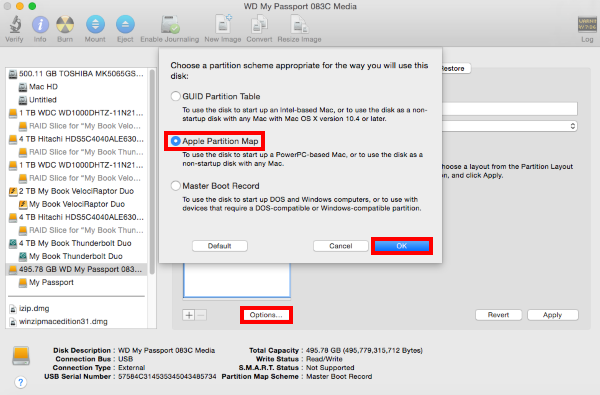
Usb Format For Mac And Win
Prepare Thumb Drive on OS X. If you only use a Mac computer, you can format your thumb drive so it can work on Windows systems. Connect the thumb drive to your Mac. Format for Mac compatibility as described, I use it with every disk. You do not need to mess with schemes, this is not Windows. You use MBR or GPT depending on what you want the drive to do. In this case you are formatting the drive to be Mac compatible. This is not about Windows.
So let's say you get a little USB drive andyou want to use it with your Mac. When you plug it in you may find that it'snot formatted for Mac, it's formatted for Windows of course because most computers outthere are Windows machines. But you want to format it for a Mac. It's easy to do. You just have to use the Disk Utility appthat you already have on your Mac. Now I've inserted the drive into my Mac intothe USB port.
I'm going to run Disk Utility here and itwill come up as one of the drives on the left. It's the 16 GB external physical disk drivethere I can see it's got one partition on it called No Name.
And sure enough it's an MS-DOS partition. So what I want to do is I want to reformatthis whole drive as a Mac drive. So I don't want to select just the volume,just that one partition. I want to select the entire thing and I wantto hit Erase. I'll give it a better name. Maybe I'll use my name there so it can identifiedit if I loose it in a computer lab or in school or something. I'll choose a format.
I want Mac OS Extended Journaled. That 's your standard Mac format. Now I get to pick a scheme. So this is kind of a level of formatting thedrive here. What I want to choose is either Master BookRecord or GUID Partition Map.
GUID is standard for Macs now so that's whatI'll choose right here. Then I'll hit erase and it'll erase the driveand create this one volume, this one partition on it called My Drive. Then I'll be able to use it on my Macs. Now I should note that MS-DOS isn't that badof a format especially if you want to use this drive between both Mac and Windows machines. Because your Mac can understand MS-DOS formatjust fine but Windows won't be able to understand Mac. So only format the drive as Mac Only if you'reonly going to use it on your Macs.
So you can see here it's done. I've got My Drive and it's now formatted MacOS Extended. 12/8/16 @ 6:53 pm I did this on my SanDisk16GB TD to create a bootable Sierra installer using restore in DU I keep getting a “Couldnt unmount disk” error.
I used FirstAid on it and it says the volume needs to be repaired. Best wired mouse. Sadly cant do this in the “new” DU introduced in 10.11. I tried to repair it on diff mac running 10.6.8 and I get stuck on “5min left” for like an hour. Cant force quit DU even, until I remove the TD from the USB port. I zero’d out the TD using terminal and tried all over again. Still same issue.
Advertisement Formatting a USB drive is no different than If you have a new HDD or SSD, you should format it. Through formatting, you can wipe old data, malware, bloatware, and you can change the file system.
Follow our step-by-step process. But how often have you actually formatted a drive and did you ever wonder what the various options mean? Most of us go with the default settings without second-guessing their logic.
Naturally, optimal settings depend on the type of hardware to be formatted and what you are planning to do with it. This article will help you make the best choice. It explains what each option does and which one is best suited for your drive and expected use.
How to Format a USB Drive in Windows Whether you’re running Windows XP, Windows 7, Windows 8.1, or Windows 10, the steps are essentially the same. • Plug in the USB drive.
• Open Windows File Explorer and go to This PC (aka Computer or My Computer). • Right-click the drive, and select Format The formatting options you can customize are File system, Allocation unit size, Volume label, and Format options. You can also Restore device defaults in case your custom settings aren’t working.
Which File System to Choose? In Windows 10, you will see a maximum of four different file systems: NTFS, FAT, A file system is the tool that lets an operating system read data on any hard drive. Many systems use FAT32, but is that the right one, and is there a better option? You will actually not see FAT and FAT32 if your drive is larger than 32 GB.
So what is the difference between those file systems and which one should you choose? Let’s look at the benefits of each. If for compatibility or speed reasons you want to go with FAT or FAT32, always go with FAT32, unless you are dealing with a device of 2 GB or smaller. Which Allocation Unit Size Works Best? Hard drives are organized in clusters and the allocation unit size describes the size of a single cluster. The file system records the state of each cluster, i.e. Free or occupied.